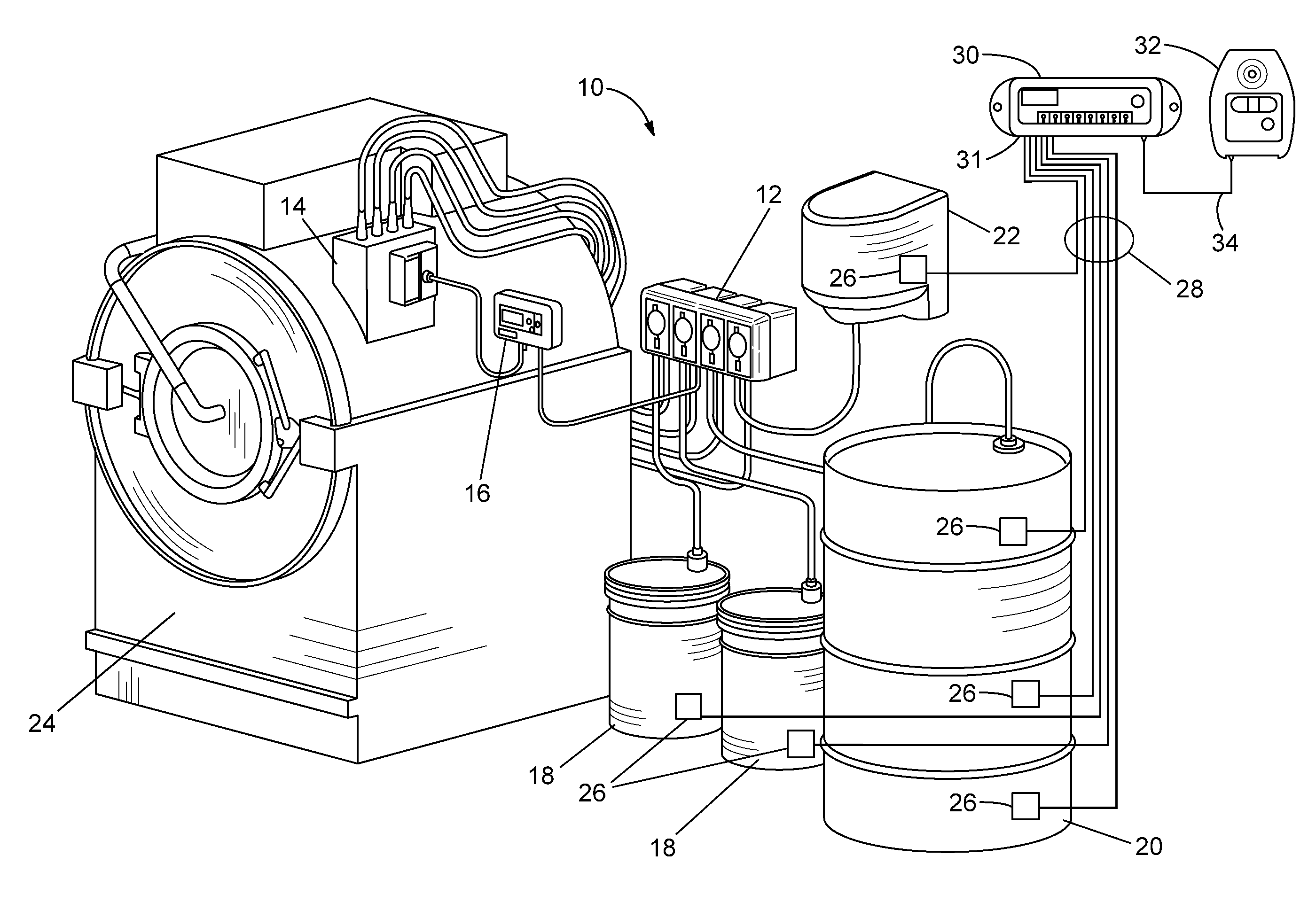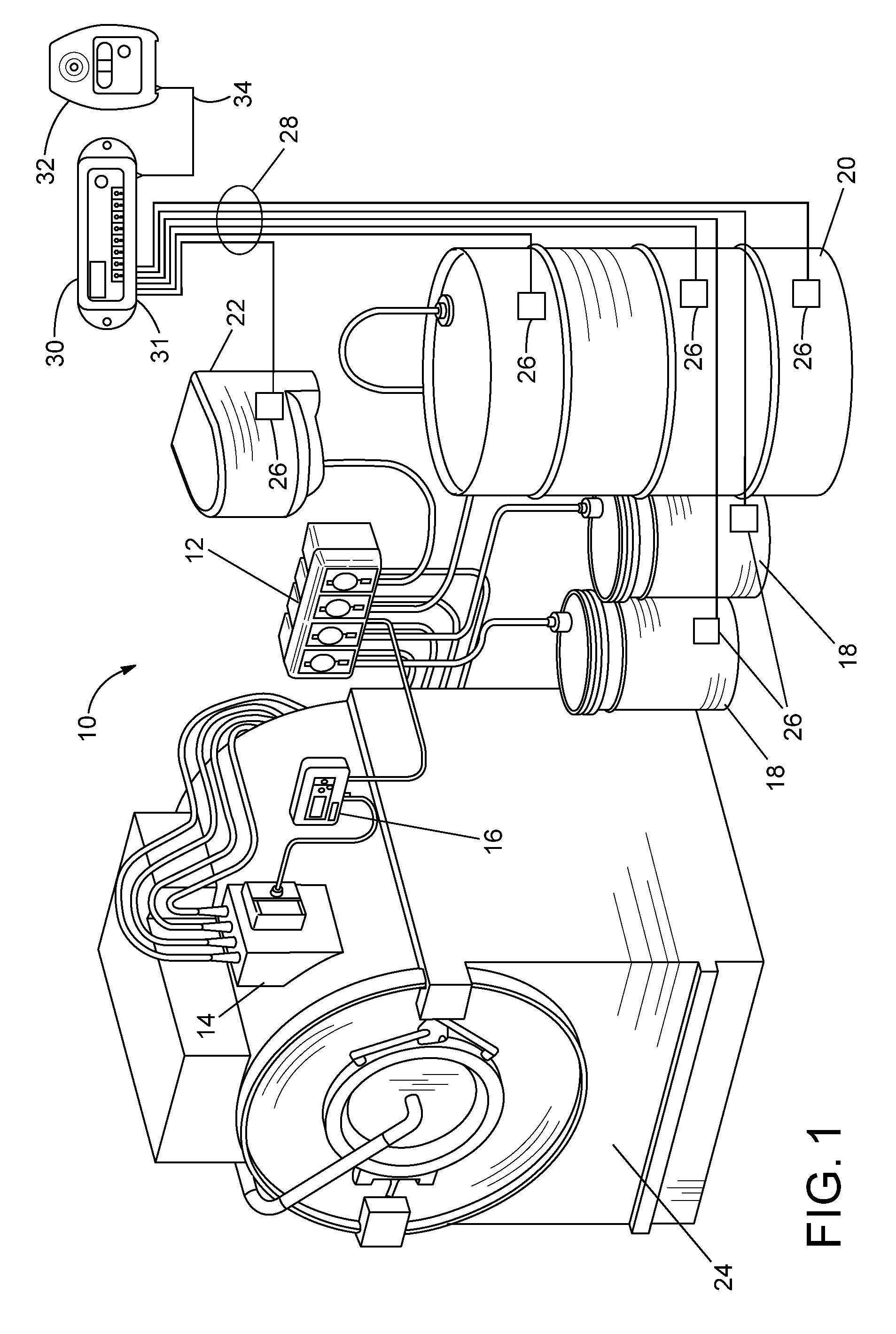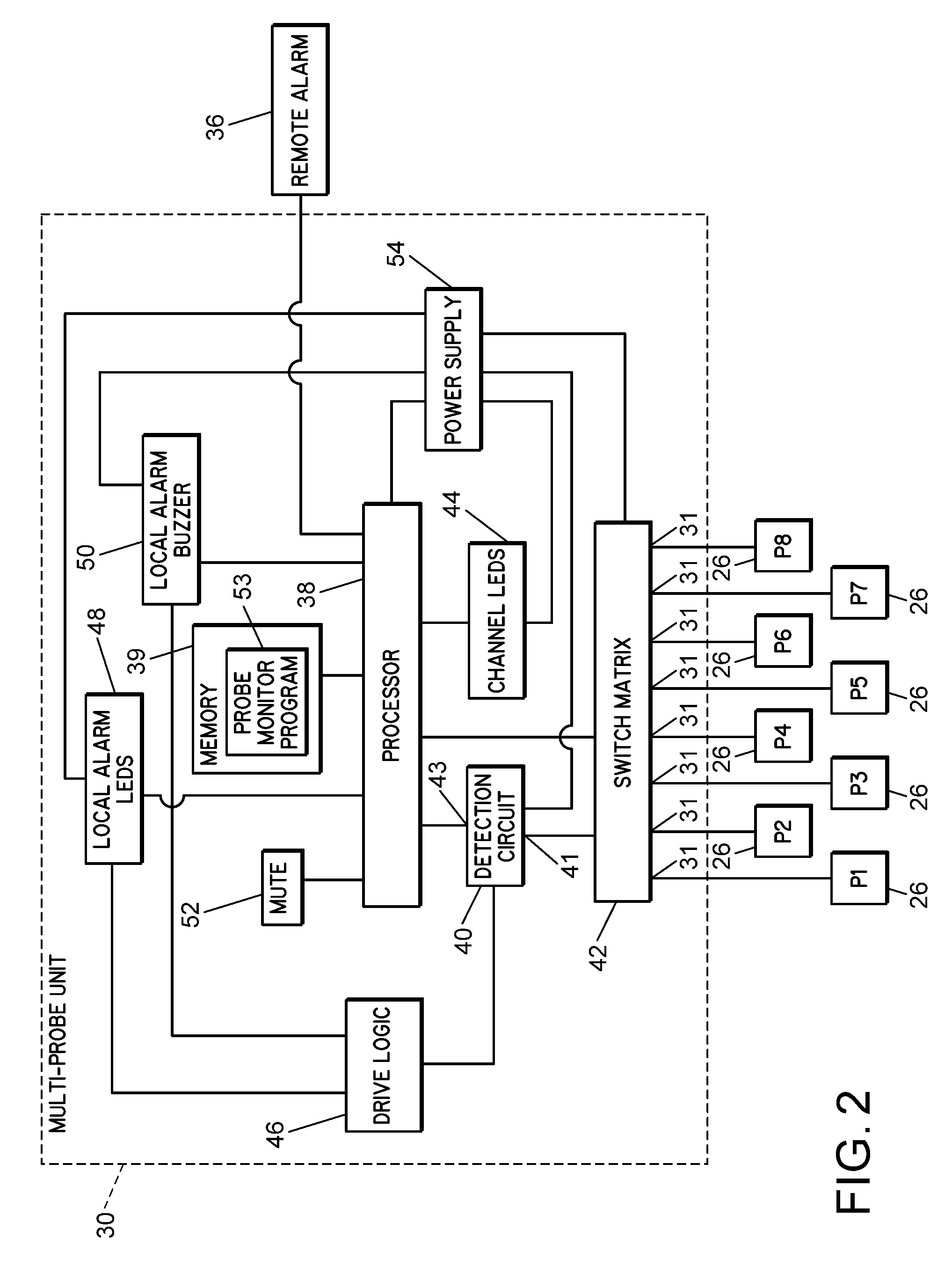System and Method For Product Level Monitoring in A Chemical Dispensing System
a technology of chemical dispensing system and product level monitoring, which is applied in the direction of liquid/fluent solid measurement, machines/engines, instruments, etc., can solve the problems of increasing the complexity and expense of monitoring system, increasing cabling requirements, and increasing the complexity of monitoring system, so as to facilitate system scalability and remote monitoring of multiple containers, low impedance and high impedance
- Summary
- Abstract
- Description
- Claims
- Application Information
AI Technical Summary
Benefits of technology
Problems solved by technology
Method used
Image
Examples
Embodiment Construction
[0029]Embodiments of the invention provide a system for monitoring a level of product in containers supplying a chemical dispensing system that assists in overcoming the difficulties with contemporary probes and product level monitoring systems. The probes utilize industry proven materials, such as polypropylene, to substantially reduce the issues related to chemical attacks on the probes, but that are modified so that the probes are electrically conductive. The probe assemblies also have a unique mechanical configuration that reduces false readings caused by viscous solutions clinging to the probes, increasing the reliability of chemical level indications over contemporary probes. The probe assemblies consistent with embodiments of the invention are used with detection circuitry that provides an indication that the level of a chemical in a container of the chemical dispensing system has dropped below a minimum level, indicating that the container is out or about to run out of the c...
PUM
 Login to View More
Login to View More Abstract
Description
Claims
Application Information
 Login to View More
Login to View More - R&D
- Intellectual Property
- Life Sciences
- Materials
- Tech Scout
- Unparalleled Data Quality
- Higher Quality Content
- 60% Fewer Hallucinations
Browse by: Latest US Patents, China's latest patents, Technical Efficacy Thesaurus, Application Domain, Technology Topic, Popular Technical Reports.
© 2025 PatSnap. All rights reserved.Legal|Privacy policy|Modern Slavery Act Transparency Statement|Sitemap|About US| Contact US: help@patsnap.com



